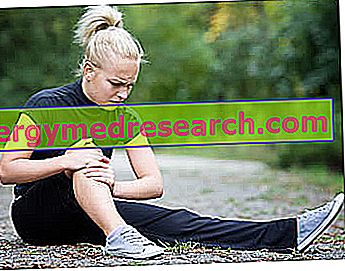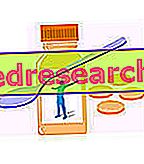Osteoarthritis (osteoarthritis) is a degenerative arthropathy.
It is a joint disease that causes the progressive loss of the anatomical parts typical of the joints.

Osteoarthritis causes wear of the articular cartilage and replacement of the chondroid tissue with the bone tissue. It causes pain and limitation in movement.
The onset of osteoarthritis and the onset of symptoms increase with age. It is identifiable (at least in one district) in most forty-year-olds and in almost all seventy-year-olds. The greatest incidence is found between 75-79 years.
This is the most important cause of pain and joint disability among Italians (over 4 million). Males suffer the most within the age of 45 and females over. The prevalence of osteoarthritis progresses with old age.
Many risk factors for osteoarthritis are the same as for osteoporosis.
What to do
- Osteoarthritis is a pathology strongly correlated to genetic predisposition, but lifestyle also has a significant impact. This means that, knowingly familiar with this disease, it is necessary to adopt a series of preventive measures towards osteoarthritis (see Prevention).
WARNING! Given the correlation between risk factors for osteoarthritis and osteoporosis, it could be useful to also respect the guidelines against this latter disease.
- Being an irreversible pathology, it is desirable that the diagnosis be made early. Anyone suffering from joint pain should seek medical attention immediately. The latter will prescribe an imaginographic investigation (usually X-rays or Magnetic Resonance or Computed Tomography) and the results will be interpreted by the radiologist. However it is also necessary to contact an orthopedist who:
- Will analyze the presence or absence of the pathology.
- It will carry out a differential diagnosis.
- He will prescribe a cure.
- NB . Once arthrosis is identified (due to symptoms or even for random reasons) it is very important to understand if it is a primary or secondary form.
- In milder cases it is useful to adopt a conservative therapy, which allows to optimize the joint condition by postponing the surgery:
- Mild motor activity: serves to maintain joint excursion, lubrication, muscular and even bone tropism (preventive for osteoporosis).
- As needed, taking light anti-inflammatories.
- Taking cartilage supplements.
- Application of medical treatments with heat, ultrasounds and muds.
- Infiltrations of chondroprotectors and hyaluronic acid.
- In more serious cases, instead, it is necessary to optimize the quality of life in view of the surgical intervention:
- Preventive-conservative physiotherapy: it involves mobilization and some motor exercises necessary to preserve muscle tone.
- Taking anti-inflammatory drugs by mouth or rarely by injection.
- Cartilage surgery or transplant.
- Physiotherapy and functional motor rehabilitation.
- Once the prosthesis is installed, it is necessary to maintain an adequate musculoskeletal fitness throughout life.
What NOT to do
- Do not adopt any method of prevention, especially knowingly with a significant family tendency.
- Disregard the symptoms and do not seek medical attention or continue the diagnostic investigations.
- Do not adopt conservative therapy or do it incorrectly:
- Do not do motor activity.
- Exceed with motor activity.
- Do not take supplements, practice heat therapy, mud or ultrasound.
- Do not carry out chondroprotection and hyaluronic acid infiltration.
- Do not take anti-inflammatory drugs.
- Refuse surgery.
- Do not practice physiotherapy before and after surgery.
- Do not maintain adequate motor function over a lifetime.
What to eat
- There is no diet suitable for the treatment of arthrosis. However a nutritional deficiency could participate in the wear and tear of the articular cartilage.
- When the weight is excessive it becomes essential to practice a weight loss diet. This is hypocaloric. The basic principles are:
- Consume an adequate caloric quantity, or 70% of normal calories.
- Choose foods with a suitable metabolic impact (whole foods and no refined carbohydrates) preventing spikes in blood sugar and insulin.
- Reach a good amount of dietary fiber. It helps keep blood sugar under control, modulates fat absorption and positively affects estrogen levels.
- Keep the fraction of simple carbohydrates no more than 10-16% of total calories (it is sufficient to eliminate all sweet foods while maintaining 4-6 portions of fruit and vegetables, in addition to 1-3 servings of milk and yogurt).
- Keep the fat fraction no more than 25-30% of the total calories, preferring the "good" ones (raw-pressed vegetable oils and medium fat blue fish) compared to the "bad" ones (saturated, hydrogenated, bifractionated, etc.).
- In the event that advanced osteoarthritis inflames one or more joints it may be useful to increase the intake of nutrients with a strong anti-inflammatory function:
- Omega 3: are eicosapentaenoic acid (EPA), docosahexaenoic (DHA) and alpha linolenic acid (ALA). They play an anti-inflammatory role. The first two are biologically very active and are found mainly in: Sardinian, mackerel, bonito, alaccia, herring, alletterato, ventresca of tuna, needlefish, algae, krill etc. The third is less active but constitutes a precursor of EPA; it is mainly contained in the fat fraction of certain foods of vegetable origin or in the oils of: soy, linseed, kiwi seeds, grape seeds, etc.
- Antioxidants:
- Vitaminics: the antioxidant vitamins are carotenoids (provitamin A), vitamin C and vitamin E. Carotenoids are contained in vegetables and red or orange fruits (apricots, peppers, melons, peaches, carrots, squash, tomatoes, etc.); they are also present in shellfish and milk. Vitamin C is typical of sour fruit and some vegetables (lemons, oranges, mandarins, grapefruit, kiwi, peppers, parsley, chicory, lettuce, tomatoes, cabbage, etc.). Vitamin E is available in the lipid portion of many seeds and related oils (wheat germ, maize germ, sesame, kiwi, grape seeds, etc.).
- Minerals: zinc and selenium. The first is mainly contained in: liver, meat, milk and derivatives, some bivalve molluscs (especially oysters). The second is contained above all in: meat, fishery products, egg yolk, milk and dairy products, fortified foods (potatoes, etc.).
- Polyphenols: simple phenols, flavonoids, tannins. They are very rich: vegetables (onion, garlic, citrus fruits, cherries, etc.), fruit and related seeds (pomegranate, grapes, berries, etc.), wine, oilseeds, coffee, tea, cocoa, legumes and whole grains, etc.
What NOT to Eat
- In the case of obesity, it is advisable to reduce the weight by decreasing the caloric intake by about 30% and leaving the balanced distribution unchanged:
- It is advisable to eliminate junk foods and beverages, in particular fast foods and sweet or savory snacks.
- It is also necessary to reduce the frequency of consumption and the portions of: pasta, bread, pizza, potatoes, derivatives, fatty cheeses, meat and oily fish, salami, sausages, sweets, etc.
- Eliminating alcohol is also crucial: these drinks are related to an increased incidence of osteoarthritis. They also promote overweight and compromise drug metabolism.
Natural Cures and Remedies
- Cartilage supplements:
- Glucosamine sulfate: it is an amino monosaccharide that structures: glycoproteins, glycosaminoglycans, hyaluronic acid and heparan-sulfate. They all intervene in the composition of the cartilaginous matrix and participate in the functional maintenance of the joints.
- Chondroitin sulfate: is a macromolecule belonging to the glycosaminoglycan family.
- Hyaluronic acid: is a molecule responsible for the hydration and protection of joint tissues.
- MSM - Methylsulfonylmethane
- Natural anti-inflammatories (eg boswellia)
- Mud baths: they are useful in reducing joint pain but do not act on the triggering cause.
Pharmacological care
They are anti-inflammatory, pain-relieving and specific for cartilage preservation.
- Opiates (for example morphine): they have a very powerful pain-relieving effect but they are addictive.
- NSAIDs or non-steroidal anti-inflammatory drugs: systemic to be taken orally. They reduce pain and facilitate joint mobility; fairly short treatment cycles are recommended because of potential side effects (impaired stomach and liver). They are more used:
- Paracetamol or acetaminophen: for example Acetamol, Tachipirina, Efferalga.
- Ibuprofen: for example Brufen, Moment and Subitene.
- Naproxen: for example Aleve, Naprosyn, Prexan and Naprius.
- Indomethacin: for example Difmetre, Indom and Liometacen.
- Nabumetone: for example Nabuser, Artaxan and Relifex.
- Piroxicam: for example Feldene, Piroxicam EG and Artroxicam.
- Celecoxib: eg Aleve, Naprosyn, Prexan and Naprius.
- Pain control drugs for topical use or local infiltration:
- Capsaicin: eg Qutenza.
- Methylprednisolone acetate: for example Medrol, Urbason and Solu-Medrol.
- Sodium hyaluronate: for example Artz injectable.
- Cortisonic: systemic to be taken orally or by injection. Generally not recommended because they increase the process of osteoarthritis, they are used ONLY in the case in which the inflammation from bone rubbing (exhausted cartilage) is at very high levels.
- Hyaluronic acid and chondroprotectors: injection sites. They will also be described in the paragraph on medical treatments.
Prevention
- Maintaining the nutritional balance: it allows to prevent overweight and functional overload on the suffering joints. It also guarantees the supply of fundamental nutrients for the synthesis of cartilage and synovial fluid. Some indications are the same as those mentioned in the Osteoporosis Diet.
- Prevent overweight or lose weight in cases of obesity (limit chronic functional overload).
- Follow an active lifestyle and practice motor activity: it prevents overweight, strengthens the muscles and consequently reduces functional overload in the long term. It also improves the lubrication of the joint and preserves its mobility.
- Do not overdo the competitive sport; the volume and intensity of training can inflame, consume or worsen joint pain (limit chronic functional overload).
- Know any congenital or acquired deformities to limit their degeneration.
- As far as possible, avoid joint trauma.
- Avoid systemic or joint infectious processes.
- Treat or prevent or contain inflammatory processes.
- If necessary, adopt orthopedic corrections.
- If necessary, adopt medical treatments at the first signs of osteoarthritis.
Medical Treatments
- Orthopedic corrections: they are preventive.
- Application of heat: serves to alleviate the symptoms of osteoarthritis. The methods are: heating pads, paraffin baths, heated pool exercises.
- Tecar therapy: it is a therapeutic method that uses an electric condenser to treat muscle joint injuries. The mechanism of tecarterapia is based on restoring the electric charge in the injured cells to make them regenerate more quickly.
- Ultrasound: this system uses high frequency acoustic waves. It is very useful as an anti-inflammatory, stimulating edematous reabsorption and to dissolve the adhesions that are formed during healing. It produces heat and increases the permeability of cell membranes.
- Infiltrations: injections of hyaluronic acid and chondroprotectors can help to preserve the affected joint, so as to postpone any surgical intervention as much as possible. Not all joints lend themselves to this kind of treatment. Furthermore, when the cartilage is totally necrotized they no longer play a decisive role.
- Cartilage and chondrocyte transplantation: can be performed with different surgical techniques:
- Perichondrium or periosteum implant: these are membranes that cover the cartilage.
- Mosaicoplasty or osteochondral graft: employs osteochondral tissue cylinders taken from the joint of the same patient and grafted under pressure in the cartilaginous defect.
- Autologous chondrocyte transplantation: cartilage cells are taken from the patient and biotechnological techniques are cultivated in the laboratory for 2-4 weeks. At this point the lesion is cleaned and covered with periosteum leaving a small hole through which the cultured cells will then be injected.
- Surgery: it is essential when the pain becomes debilitating. In the past there was a tendency to resort to it as late as possible; today the priority of functional maintenance is recognized. Especially in mature or senior citizens, staying in bed significantly compromises functional capacity and lengthens recovery after surgery. It can only include the insertion of a titanium or ceramic plate to coat the joint or provide for the removal and replacement of whole joint heads. Today, the transplanted patient is able to move the joint one day after the operation. It is less used for the spine.
- Physiotherapy: useful both before and after surgery. Optimize functional recovery.



